‘Palm Royale’ Costume Designer Talks 1969 Style and Handpicking a Show-Inspired Collection for The RealReal (Exclusive)
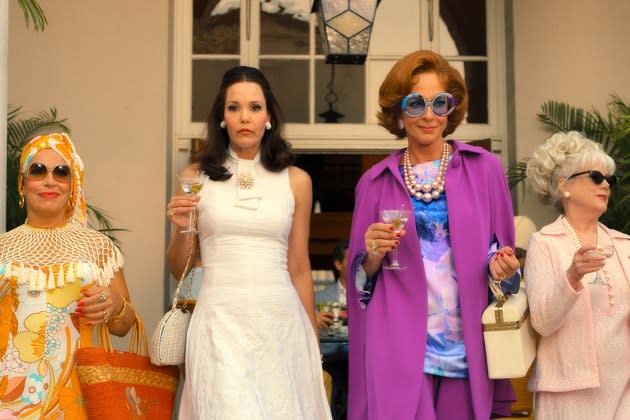
Fashion makes a splash in Apple TV+’s period comedy series Palm Royale, set in 1969 Palm Beach and debuting on March 20.
Loosely based on Juliet McDaniel’s book Mr. and Mrs. American Pie, the show stars Kristen Wiig as aspiring Palm Beach socialite Maxine, alongside Laura Dern, Allison Janney, Kaia Gerber, Leslie Bibb and Ricky Martin, plus Carol Burnett and Bruce Dern.
More from The Hollywood Reporter
Emmy-winning costume designer Alix Friedberg (who worked with Dern on Big Little Lies) speaks with THR about sourcing thousands of vintage looks and partnering with The RealReal on a curation of over 600 apparel and accessories pieces that mirror the Palm Royale aesthetic.
In the mix are vintage finds from labels seen in the show (such as Courrèges, Givenchy, Chloé, Chanel, Christian Dior, Malcolm Starr and Emilio Pucci) as well as contemporary brands including La DoubleJ and Zimmermann. The RealReal x Palm Royale Edit (for women and men) is available now.
Tell us how you onboarded. I know that you worked with Laura on Big Little Lies.
Yes, Laura is the person who called me about it. She asked if I would be interested in reading the script and started to tell me about it, saying, ‘1969 Palm Beach, Florida. Slim Aarons inspired.’ I told her that I was not even interested in reading the script because I was already 100 percent on board based on the description. So I met with Tate Taylor, who directed the first episode, and Abe Sylvia, the showrunner. I was really lucky to get this job because it’s a gift.
Can you speak to your inspiration boards and how you dove into research?
They have an incredible archive at Western Costume, a research library that has a huge archive of European Vogue, Mademoiselle, McCall’s, Harper’s, all of the magazines from that era. So we started there. We obviously collected a lot of Slim Aaron’s photography, and then we were inspired by a lot of the families who actually lived in Palm Beach at that time and were the society matriarchs. So, we did a lot of research, got a lot of video and visuals documenting society in 1969 and that period. It was a treasure trove.
Color is a huge component — the pastels and brights — can you describe the palettes?
So we were able to pull from the visuals for our palettes. For the actual town of Palm Beach, the Palm Royale beach club, we did a lot of whites and greens and pinks and vibrant pastels and bright Lily Pulitzer and Pucci prints. We had a separate palette for West Palm — for the Laura Dern character [Linda] and her gang of feminists — rooted in earth tones, orange and rust and chartreuse and avocado with browns. That way, whenever Maxine travels outside of the club and her Palm Beach world, you see how much of a fish out of water she is.
We took it further when you move into the bookstore and Linda’s residence. It’s more of a working class environment, the reality of 1969 for the counterculture and the hippie movement, so there’s denim and wood and macrame and natural fibers. Whereas Palm Beach is a very synthetic environment, where nobody is actually working with their hands or getting dirty. It’s quite bright. People are either swimming or golfing or in a tennis match. It’s that world of society, countered with Linda’s world of feminists that were those real, bra-burning ’60s bohemian silhouettes.
What percentage of costumes did you source versus make, and what were key resources?
Overall, I would say 60 percent was actual vintage that we pulled and the other 40 percent was built. We built a ton for Evelyn and Maxine. We were able to find some really incredible, intact designer pieces from outlets like The RealReal and Paper Bag Princess in Los Angeles, which has quite a bit of couture vintage. Arcade in L.A. curates from vintage stores around the U.S. and Etsy was enormously helpful. Then we pulled from costume houses. People got really excited to send us things, so we ended up with about 500 seashell necklaces!
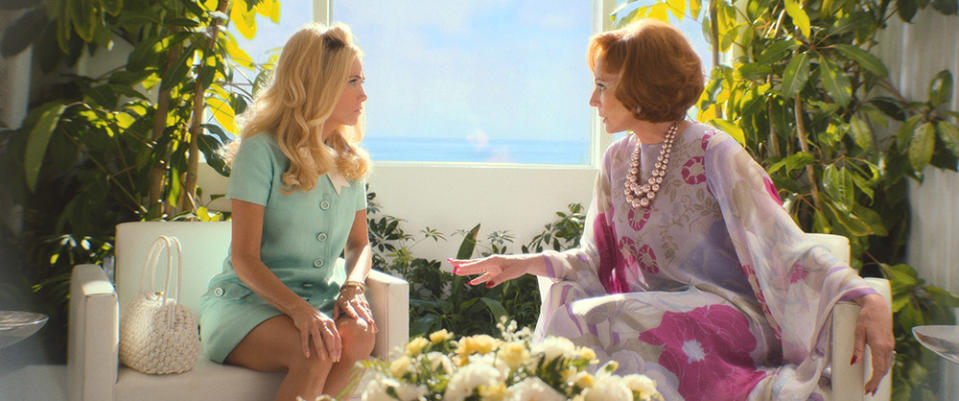
We were able to take inspiration from archival designer pieces. If it wasn’t in shape to last as long as we needed for our shooting, we took the original print and printed it on our own organza or silk to recreate it for stunts or long scenes and sequences. Sometimes things in costume houses are over-dyed or look a bit sad. They can work on background, if you’re doing a ’60s movie about the youth revolution in San Francisco. But for our show, everything needed to be fresh and bright. So we had to find dead stock to piece together what we needed and make things that we weren’t able to find. We had a base team of 40 people and worked on it for about eight months. Every day was joyful. It was the most fun job I’ve ever had!
Any estimate of how many total costumes you had?
I mean, thousands! I don’t know how to quantify it. We did a gala or large event for each of the 10 episodes and there was a core group of 150 guests, who were the pinnacle of society at the Palm Royale club. So we gave each person a little back story and club outfits, lunch outfits, gala gowns — like two or three for each guest. All 150 people had to be accessorized, because it was a big deal then, and the shape of undergarments were important in that era — the cone-shaped bra and keeping a cinched waist. We used all original undergarments.
How did you approach the style of Kristen Wiig’s Maxine?
Maxine dresses like an 8-year-old girl in her optimism. It’s always these “a little too short” silhouettes, doll-like big bows, matching shoes and bags, a sort of paper doll-like quality. The tan skin, blonde hair with a bow and constant smile on her face is quite childlike. When she first goes to Palm Beach, she starts to steal things out of Norma’s [Burnett’s] closet. Unbeknownst to her, they’re all maybe 10 years dated, and women of that society sniff her out immediately, because she’s not wearing the latest and greatest. So once she realizes that and asks Grayman [Dominic Burgess], owner of local atelier Ciel Chapman, to help her, she starts to adopt a more current style. She looks to Evelyn [Janney] as her beacon and moves into caftans and bigger sunglasses and hats, but she doesn’t quite get there.
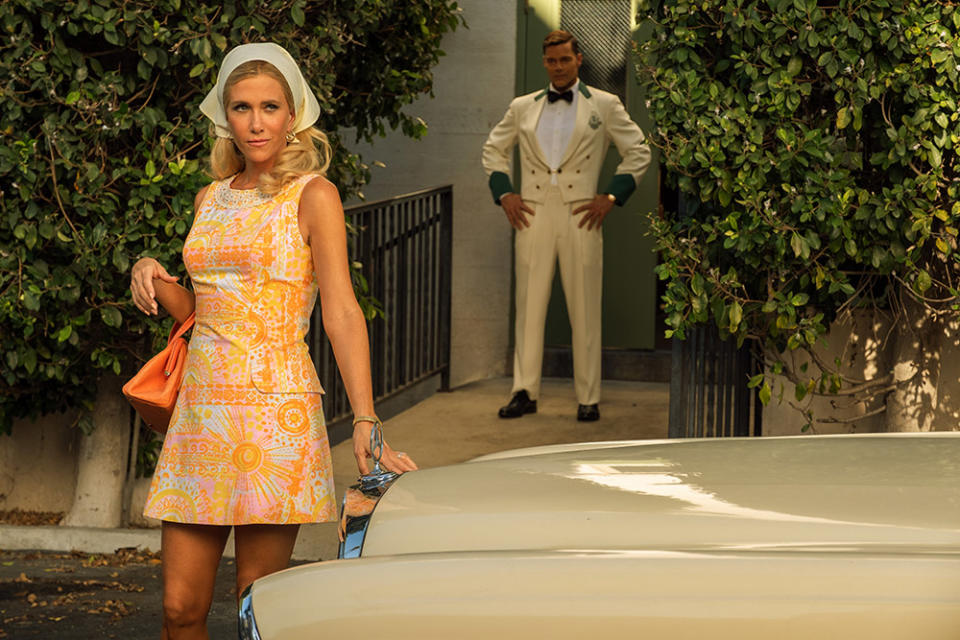
Whenever you see Maxine, she’s kind of putting on a costume for somebody else, looking hopeful and overdressed a little bit too much in each situation. There’s this episode where the astronauts are going to walk on the moon for the first time, and she’s got this orange saucer-like hat on and it’s not in the right spot. There is always something a little bit off about her — trying too hard. She’s joyful and unaware of how she’s missing the mark.
Let’s talk about Evelyn’s look.
She’s really studied in terms of how she’s figured out that she’s at the top of the pyramid. We did her a lot in jewel tones, partially because she’s a redhead in the series and also because it’s regal and most of her costumes are custom made with inspiration from real garments. She has an actual Galanos gown in one of the scenes, and she wore a lot of Pucci-inspired pieces, Givenchy, Dior, YSL. They were all doing that loose-flowing, Eastern-influenced style. Everyone was super into Indian-inspired pieces and ethnic fabrics. Everything’s fabulous and chic — her sunglasses, her hat — and she floats into a room. There’s always an element, a jacket or a train or a bell sleeve, that’s quite bird-like about her. She’s aspirational for all the women.
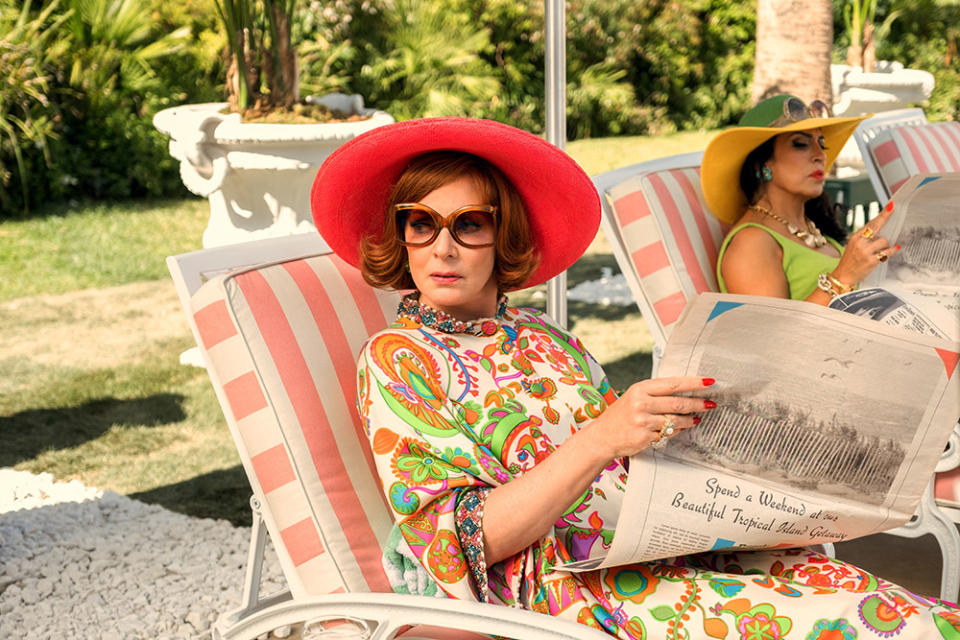
In terms of the men, Ricky Martin’s Robert has quite the signature West Palm Beach style.
Yes, he has these printed Cuban-inspired short-sleeve camp shirts and a lot of cabana sets because he had this private life inside Norma’s pool house where he can be himself and be free. Whereas, when he works at the Palm Royale club, he’s in a uniform, putting on airs and closeted. He’s the keeper of secrets. The colored pants were another big thing and his sandals.
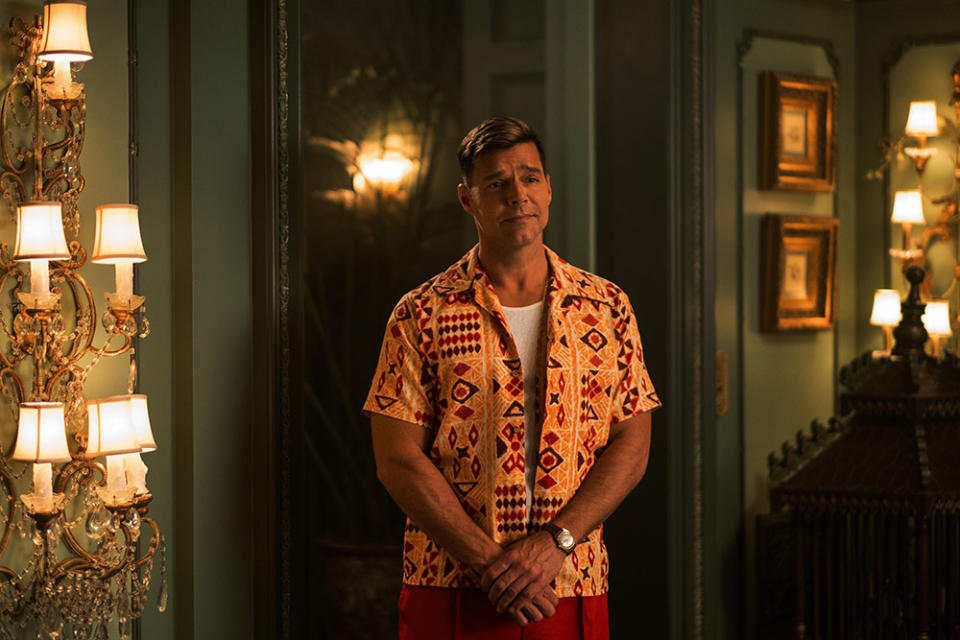
Any favorite looks?
My favorite look was possibly Maxine’s Beach Ball gown. It has a tiny removable capelet that reveals almost the exact same silhouette underneath. A silly detail that is quintessential Maxine. There’s also a phenomenal Bill Blass piece that was a real discovery. I love the way the multiple layers of organza cape move and Maxine really works it in the scene. There are so many designers that have lasted half a century, and you don’t realize it. I think of Blass as an ’80s designer, but he was designing back then as well.
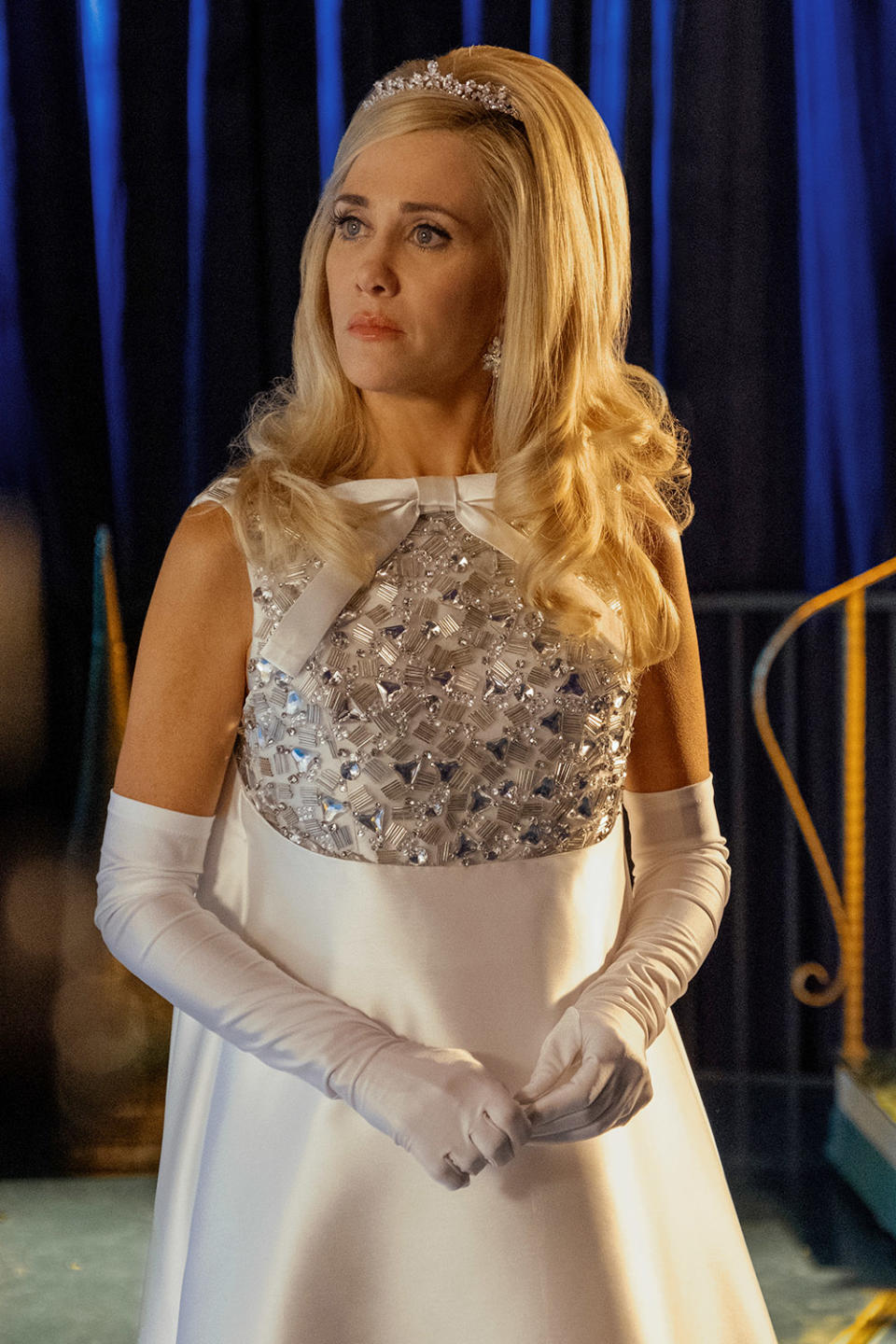
How did The RealReal partnership come about?
They reached out about the collaboration, and it makes complete sense because of the amount of vintage and classic luxury pieces that speak to the fashion in the show. I’m personally a humongous fan of circular fashion and the business model of The RealReal. I have been a rabid consumer of the site myself. I always start to panic when my site credit gets too low. It’s like, ‘Okay, what in my closet can I get rid of?’ I’m passionate about sustainability, so I’m excited to promote that and to direct any fans of the Palm Royale costumes to take a look at the statement rings and caftans and the wonderful sandals. The ’60s and ’70s were a complete revolution. It was like the handcuffs came off and you didn’t have to follow rules anymore. That aesthetic has never, ever gone out of style. We always circle back to it.
Best of The Hollywood Reporter

 Yahoo News
Yahoo News 
